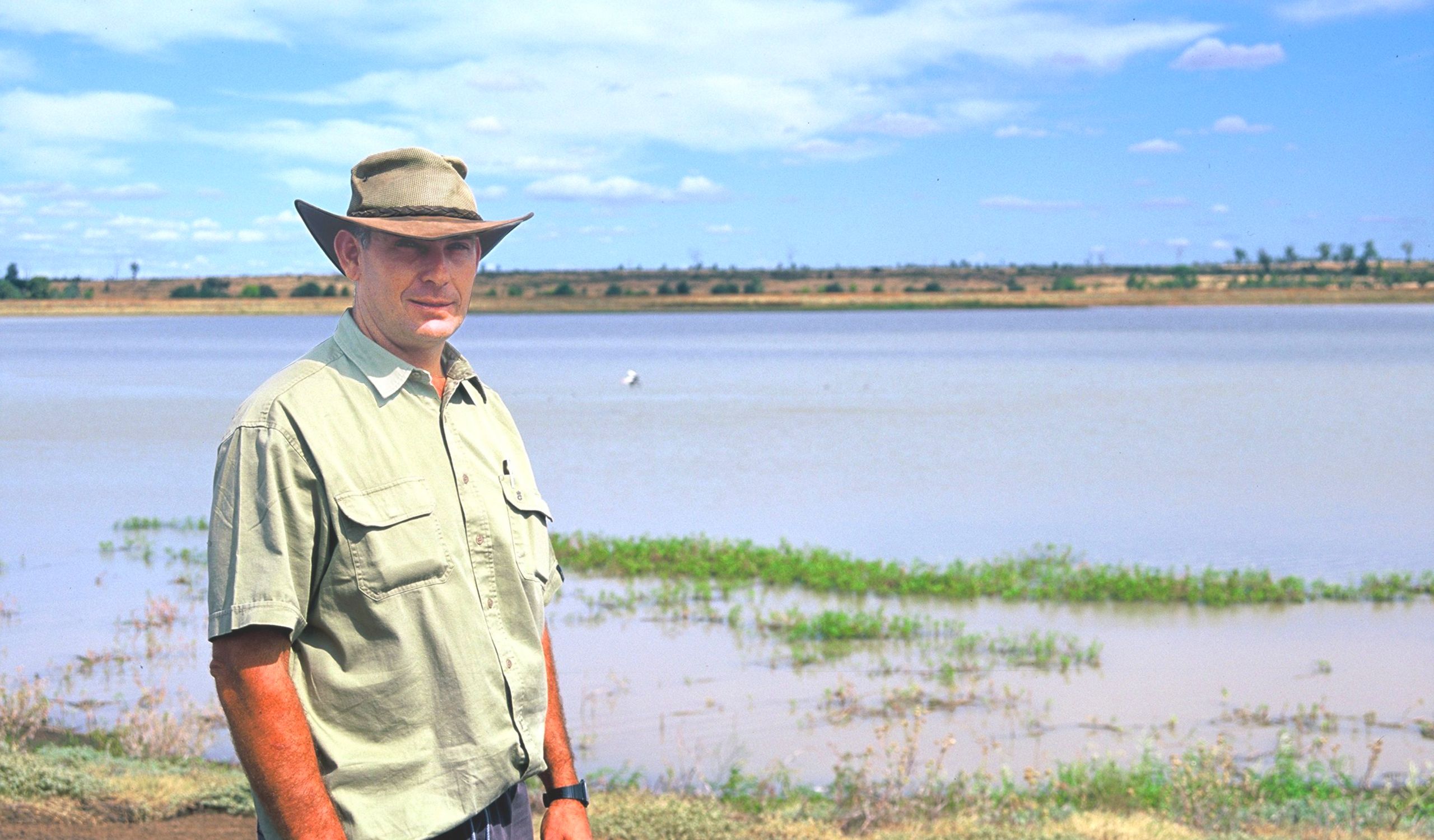Towards Climate Resilience Series: Australia Case Study
Fighting Drought with Better Cotton Farmers in Australia

The Climate Challenge
In Australia, intense temperatures of up to 49°C, and less frequent but more intense rainfall, create challenging growing conditions for cotton farmers. In October 2018, parts of New South Wales saw more rain fall in 24 hours than farmers had seen all year, yet the state still faced drought conditions and parched soils. Droughts are putting cotton farmers under increasing pressure, with much of southern Australia in drought for the first decade of the millennium. In addition to more regular droughts and floods, cotton farmers face greater unpredictability as established seasonal weather patterns change, disrupting the traditional growing cycle.
Amid deepening water scarcity and fluctuating water costs, farmers are working co-operatively with the Australian government to deliver the Murray-Darling Basin Plan, an ambitious $13 billion programme, to significantly increase the amount of water available to the environment, while reducing access to water for agricultural use.
How Better Cotton Farmers in Australia Are Adapting to Extreme Weather
Cotton farming in Australia is highly mechanised, with farmers tapping into advanced digital technology and efficient machinery. Yet optimising their use of resources, particularly water, is an ongoing challenge.
"Precision irrigation and water-saving techniques are becoming more important as water scarcity concerns rise. The Better Cotton Initiative and Cotton Australia are helping farmers raise their yields, improve their resilience to extreme weather and protect the environment."
Some farmers in Australia are using precision technology to optimise their use of water. For example, some farmers combine satellite imagery of their cotton crops with digital soil moisture readings and local weather data, in order to predict exactly how much water to apply on a particular day. To further improve water efficiency, they might use high-technology land-levelling equipment that allows for more even water distribution, and drop-down sprinklers to irrigate the crops with greater precision. Over the past decade, Australian cotton growers have improved water use efficiency by 40% (according to the Gross Production Water Use Index).
“The ‘Millennium drought’ prompted me to invest in new technology to irrigate my crops more efficiently. In this way, I’ve been able to raise my yields and use less water.”
Similarly, some Better Cotton Farmers are using precision technology to apply inputs (like pesticides and fertilisers) in a way that exactly matches their crop’s requirements, therefore reducing the overuse of inputs. For example, Better Cotton Farmer Neek Morawitz recently upgraded his fertiliser application equipment with variable rate technology, allowing him to adjust the rate at which the fertiliser is applied according to the needs of the crop in different parts of the field.
“Variable rate technology is helping us to improve yields while saving fertiliser, improving water quality, and reducing greenhouse gas emissions. It’s good for cotton production and the environment.”
Better Cotton Farmer Neek Morawitz, 2019.

Reducing the Carbon Footprint of Cotton Farming
As the effects of climate change unfold, Better Cotton Farmers in Australia are also contributing to the global push to curb carbon emissions. For example, Better Cotton Farmer Andrew Gill in New South Wales has switched from diesel-powered water pumps to an irrigation system powered by 400 solar panels with the capacity to produce 100kW of power. Since 2015, he has saved nearly 165,000 litres of diesel and made a 46% cost saving.
Reducing emissions of nitrous oxide (N2O), a greenhouse gas and contributor to ozone layer depletion, is also an important concern for Better Cotton Farmers. But to do this, they must achieve a difficult balance between the need for nitrogen to produce good cotton yields and the need to suppress the N2O emissions it generates. To address this challenge, Better Cotton Farmers in Australia analyse levels of nitrogen both in the soil and the cotton plants themselves, and calculate the exact level of fertiliser required per hectare. When they rotate the crops grown in a certain field, they prioritise plants (such as legumes) that will help to capture nitrogen from the air and deliver it to the soil.

What’s Next
To build knowledge of climate change in the cotton sector, the Commonwealth Scientific and Industrial Research Organisation (CSIRO), supported by funding from the Cotton Research and Development Corporation (CRDC) is studying the effects of higher CO2 levels and warmer temperatures on cotton growing and investigating options for mitigating those effects. CSIRO scientists are also working to develop new cotton varieties adapted to hotter, drier conditions.
The success of the Australian cotton industry has been driven by a commitment of the growers to support research and development, which they do through a levy on every bale produced. Australian cotton growers, through our field-level partner, Cotton Australia, provide advice to CRDC on their research priorities. Current research activities include investigating the use of plant growth regulators to manage the impacts of higher temperatures and increased levels of carbon dioxide. They offer the potential to reduce the excessive amount of vegetative growth predicted likely with increased levels of CO2. They could also be used to delay plant growth during heat waves so as to avoid the cotton bolls shedding before they are ready for harvesting. Finally, the industry continues to research new ways to further improve its water use, and is looking at both advanced sensing technologies that can further improve irrigation management, as well as more traditional approaches such as cover crops that can help prevent water evaporating from the soil and to harvest rain water more efficiently.



